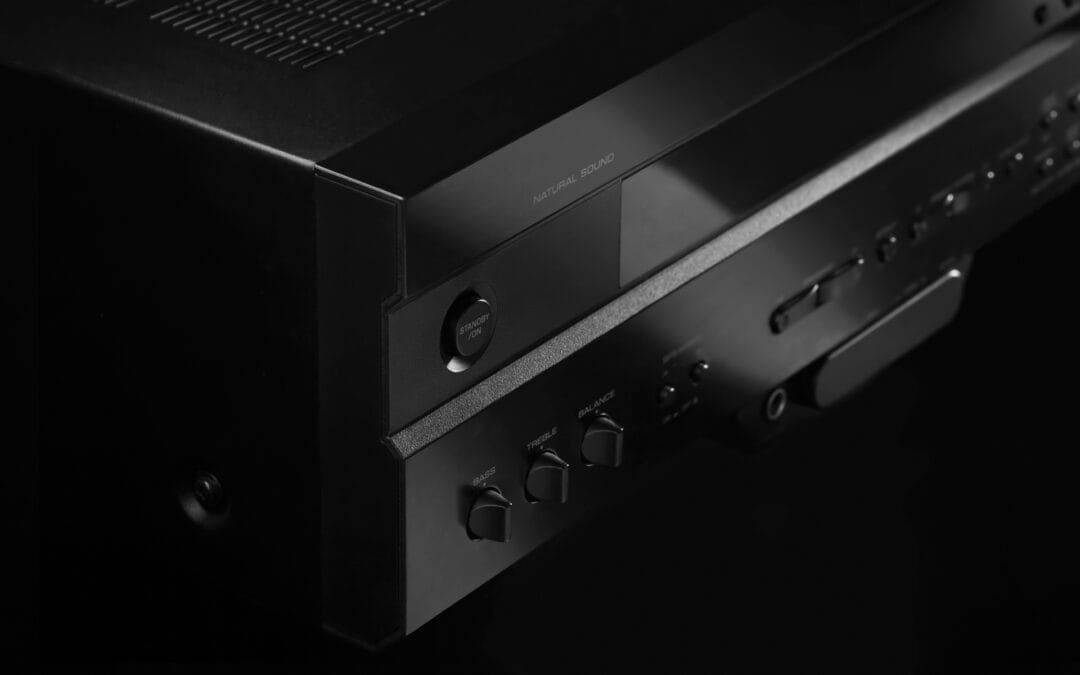You’re setting up your speakers in your home and trying out different places and positions. You found the perfect place for your stereo receiver, but you will have to put it on its side. Can you do this: put a receiver on its side?
You shouldn’t put your stereo receiver on its side. It is meant to stand the way it has come, not on its side. It is unlike other devices in that you can set it on its side or right side up.
There are many reasons you should not put it on its side. Does this mean your receiver will not work on its side? It will still work, but it is just advised not to do so. Continue reading to learn more.
Table of Contents
Can You Put A Stereo Receiver On Its Side?
It is advised that you shouldn’t put the stereo receiver on its side. This is because the vents of the receiver are on the top and on either side of it. This keeps it from overheating and disperses the heat evenly.
You can put the stereo on its side; some people have done this, but keep a watchful eye on it. You want to ensure that all the other vents aren’t blocked, and you can even ensure that there is room for heat to escape on the side facing downwards.
Signs Your Stereo Receiver Is Overheating
If you decide to set your stereo receiver on its side, you must watch for signs it is overheating. If you see any of the following signs, you will need to position it uprights so that your receiver doesn’t get damaged:
- The stereo receiver suddenly turns off.
- The fan is constantly running.
- It is hot to the touch.
- Any warning indicators are on.
- It is not working correctly.
- Getting an error code.
- Doesn’t respond to controls or remotes.
- It isn’t playing sound when it should be.
Any of these are a bad sign that your receiver is overheating. Don’t leave it on its side. This means it cannot disperse the heat properly, and its position needs to be corrected.
What To Do If It Is Overheating?
If your stereo is already overheating, don’t worry. There are things to help cool it down without further damage. You want to follow these steps:
- Turn off the receiver and unplug it.
- Remove it from any alcove or shelf.
- Remove it from any heat sources.
- Set it on a counter.
- Once cool to the touch, plug it back in.
These will help reduce any heat damage to your receiver. It shouldn’t have been damaged if you catch it early, but you won’t know until you try to use it again.
Turn Receiver Off And Unplug It
When you learn it is overheating, it is best to turn off the receiver immediately. Unplugging it will ensure that there is no longer power going to it, which causes it to heat up.
Remove From Alcove Or Shelf
Remove the receiver from whatever alcove or shelf it is on. When it is inside something or on a shelf, the enclosed area makes it difficult for the heat to disperse, especially when overheating.
Remove Heat Sources
You will want to remove the receiver from any other heat sources. So if it is near a gaming console that is putting off heat, too, you will want to remove it from there as well. You want the heat to cool down swiftly, and it won’t do that with more heat distributed near it.
Set It On A Counter
After removing it from other heat sources and the shelf, it is on, set it upright on a counter or open space. This allows the heat to disperse quickly so to reduce any further damage.
You don’t need to try to cool it down any other way. This should do the trick. Just leave it alone while it cools down, and don’t plug it in until it is cool to the touch. If it still feels a little hot, give it a little more time.
Plug It Back In
Once it has cooled down, you can plug it back in. This will tell you if there has been any damage. You will see signs like it is not turning on or doing the functions you want. If it is running normally, then you have saved it from overheating! Yay!
Outro
It is always best to follow the manufacturer’s suggestion to stand it upright. This will ensure a long-lasting stereo receiver and reduce the chances of it overheating. Better to be safe when it comes to a big purchase like a stereo receiver.
